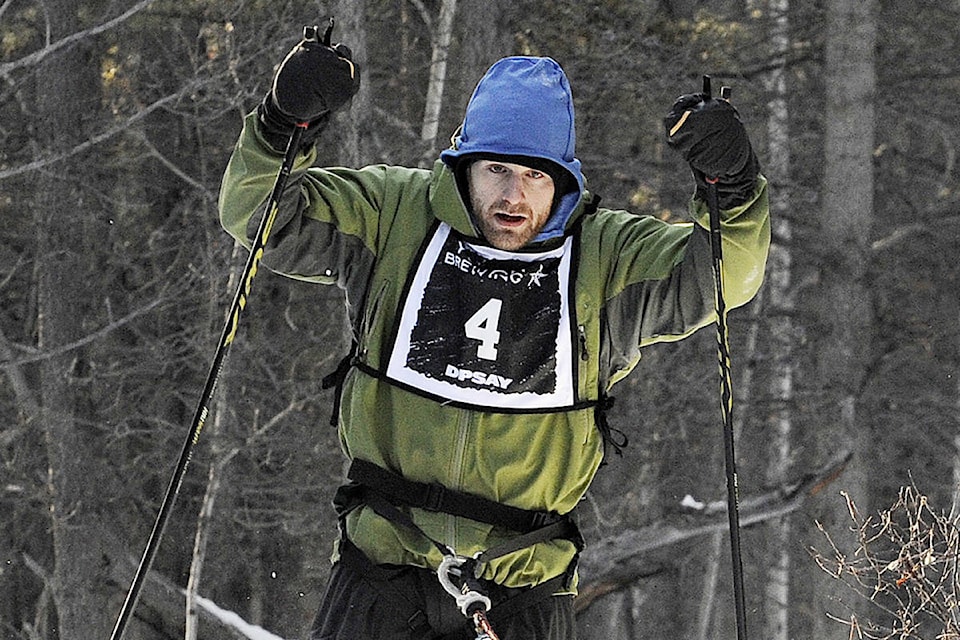Darryl Sheepway fired the shot that killed Christopher Brisson while the two men struggled over Sheepway’s shotgun — not, as has been previously suggested, while Brisson was attempting to drive away.
That was the theory put forward by the defence in its closing submissions Dec. 7 as Sheepway’s trial for first-degree murder, presided over by Yukon Supreme Court Justice Leigh Gower, draws to a close.
The four-week-long trial has been an unusual one, legally, on several fronts. At issue is not whether Sheepway killed Brisson in 2015 — he’d previously offered to plead guilty to the lesser charge of manslaughter — but whether Sheepway intended to kill Brisson and, by extension, his degree of culpability. Judge-alone trials are also rare when it comes to a charge of first-degree murder, and the testimony in this case came largely from a series of experts. There were no eyewitnesses to the killing.
What’s agreed upon is that Sheepway, desperate for more crack cocaine but without means to pay for it, lured Brisson, his dealer, out to a remote Whitehorse road on Aug. 28, 2015, under the guise of buying drugs from him.
The men were sitting in their trucks, side-by-side, when Sheepway pulled out a shotgun. Brisson grabbed the barrel and the two men struggled over the weapon, during which Sheepway fired the gun twice. At some point, Brisson let go and drove forward, during which Sheepway fired at least one more shot into the back of Brisson’s truck.
One of those shots hit Brisson and killed him, with the 12-gauge slug entering his left shoulder and ultimately coming to rest in his right jaw.
One of Sheepway’s two lawyers, Vincent Larochelle, handled the cross-examination of expert witnesses and presented his portion of the defence’s closing submission first.
“Mr. Sheepway is a killer, your honour, but he is not a murderer,” Larochelle told Gower. From the defence’s perspective, he continued, the choice in this case should be between manslaughter and second-degree murder, and Sheepway is guilty of the former.
Larochelle also presented, for the first time, the defence’s own version of what it believes could have happened the day Brisson died.
Breaking from the theory that Brisson was killed by a shot Sheepway fired into the back of his truck after the botched robbery attempt, Larochelle said it’s possible that, in fact, Brisson was killed by one of two shots Sheepway fired while the two men were struggling over the shotgun.
The first shot would have blown out the passenger-side window, Larochelle said, and Brisson would have let go of the shotgun barrel, pushing it backwards and away while putting his truck in gear.
That’s when Sheepway would have fired the second, and fatal, shot, Larochelle said, a theory supported by evidence given by experts throughout the trial. The slug recovered from Brisson’s body contained no traces of glass, Larochelle pointed out, a highly improbable case if the bullet had, in fact, travelled through the back window of Brisson’s truck.
The fact that the wadding was found next to the bullet in Brisson’s body also suggests that the shot was fired at close range, Larochelle continued, as wadding tends to fall away if the bullet travels farther than a few feet.
The position Brisson’s body would also need to be in for the bullet to travel in a straight line from his left shoulder to his right jaw — slightly leaned over, with his neck turned to the left — also makes more sense in the defence’s theory, Larochelle argued, than the Crown’s.
The Crown had previously suggested that it was the shot through the back window that killed Brisson, and that Brisson had been ducking when he was shot.
“If you’re ducking, you’re ducking,” Larochelle said, “not sort of slouching and looking up into your steering wheel.”
On what a ballistics expert identified as a second bullet hole in the back of the truck, Larochelle said that the hole may have, in fact, been created by a tree branch when Brisson’s truck crashed into the bush following the shooting. The bullet that went through Brisson’s headrest also would have lost a significant amount of energy travelling through the glass and then the dense foam of the headrest, Larochelle said, and may have simply fallen out of the truck later on.
Gower questioned how realistic that theory was.
“I’m not an expert in branch physics, your honour, but I do know there are big branches,” Larochelle responded.
Other exchanges between Larochelle and Gower grew tense at times, with Gower, at one point, chastising Larochelle for being “snide” and saying that he didn’t appreciate his attitude.
Sheepway’s other lawyer, Lynn MacDiarmid, began her portion of the defence’s closing submission the afternoon of Dec. 7, asserting that Sheepway had proven himself a reliable, honest witness who did not embellish the truth nor skim over portions of the story that were unflattering.
The defence’s case also isn’t built simply on an intoxication defence, MacDiarmid said, but one that looks at the totality of what was going on in Sheepway’s life — the emotional distress, the addiction to crack, the cravings and the withdrawal symptoms he was experiencing that day.
Put together, MacDiarmid said, it’s clear that Sheepway simply did not have the intent behind his actions that would constitute murder.
MacDiarmid is expected to finish her submissions the morning of Dec. 8.
The Crown will present its closing arguments afterwards.
Contact Jackie Hong at jackie.hong@yukon-news.com
